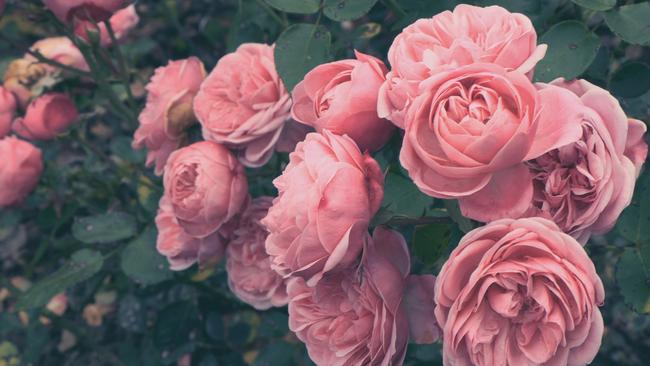Winter is the best time to prune roses
July is the classic time to give roses their major winter prune. Don’t worry, you can’t kill them by being too aggressive, in fact it’s a great idea to prune when you’re feeling cross ...

July is the classic time to give roses their major winter prune. In frosty areas, hold off until after the most severe frosts. Aim to end up with a short, vase-like framework of four or five strong stems. Don’t worry, you can’t kill them by being too aggressive, in fact it’s a great idea to prune when you’re feeling cross – you and the roses will benefit.
Use clean, sharp secateurs and disinfect them between bushes. Remove stems that are dead, damaged, diseased, crossing or weak, then cut the remaining stems close to an outward facing bud. Groundcover roses can be lopped near ground level with hedging shears; heritage roses just need a tidy up and shaping.
Don’t prune any roses that flower only in spring (such as Banksia roses) or you’ll lose the flowers; prune these after flowering. After pruning, spray the roses and ground area with lime sulfur to help control pests and diseases. It’s also time to prune many other deciduous plants while they’re dormant, including hydrangeas, wisteria, grapes and figs. However, don’t prune spring flowering trees or you won’t get any flowers.
Other articles from The Weekend Australian Magazine’s gardening expert:
What to plant for a gorgeous winter garden
Add this colour to your garden design armoury
How to keep a hedge in good shape
A short guide to growing Gardenias
Let There Be Lights
Botanic gardens are being transformed with light, colour and sound this winter. Multi-sensory trails lead through glowing tunnels, past luminous flowers and light sculptures, with tree canopies lit in a rainbow of colours. Royal Botanic Garden Sydney until July 16; WA Botanic Garden, Kings Park, until July 30, Melbourne’s Royal Botanic Gardens until August 6. Book through Ticketek.

-
Q&A
What is the secret to growing coriander successfully? We (and others) have had many poor results. Should we give up?
Wolfgang Zeidler, Adelaide
Coriander, dill and rocket cause more despair than any other herbs because they are annuals prone to “bolting”; that is, they all-too-quickly flower and die. They bolt from any stress – heat, dry or being transplanted. To succeed you must grow them from seed, in the cooler months, and find a spot where they’re happy. If they are, they can even self-seed. Sow a batch every six weeks and give soluble fertiliser weekly so you can have a continuous supply of young, sweet leaves. Saw tooth coriander (Eryngium foetidum) has a similar flavour to regular coriander but is less prone to bolting.
All my hellebores have copious leaves but no flowers. Is there anything I can do?
Ruth Cooper, Deloraine, Tasmania
Ideally, cut back old, tired foliage in autumn just before the new growth starts to push through. This allows the new leaves and the winter flowers to come up cleanly and show well. Feed them then too with a flower-boosting fertiliser, along with a sprinkling of dolomite. Too much nitrogen in the fertiliser will promote leaf growth at the expense of flowers.
Could I espalier my three-year-old fig, which is growing nicely? I’d also like to graft on some other varieties to train at different levels to extend the harvest time.
Ray Guerin, Launching Place, Victoria
Figs lend themselves very well to espaliering flat against a wall or along a trellis. Grafting on different varieties is a brilliant idea. Spring is the best time to do this and there are numerous tutorials online. Multi-grafted fruit trees need careful pruning to keep the different varieties of variable vigour growing evenly.
Send your questions to: helenyoungtwig@gmail.com. The best question for June wins a pair of multi-purpose waterproof Outnabout boots worth $140 in a choice of four colours.




To join the conversation, please log in. Don't have an account? Register
Join the conversation, you are commenting as Logout